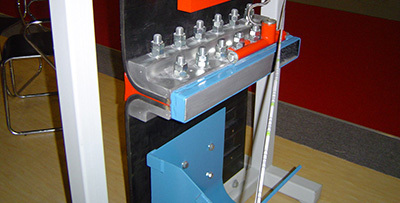News Center
Hezi technology focuses on the research and development of "rapid seamless conveyor belt joint sleeve" innovative technology project

NEWS CENTER

News Details
The Ultimate Guide to Choosing the Best Elevator Belt for Chemical and Rubber Applications
Release time:
2025-06-04
When it comes to the chemical and rubber industries, particularly in the manufacturing of various rubber products, selecting the best elevator belt is crucial for efficient material handling. Elevator belts play an essential role in elevating bulk materials, and the right choice can significantly impact productivity and operational efficiency. One of the primary factors to consider when choosing t
When it comes to the chemical and rubber industries, particularly in the manufacturing of various rubber products, selecting the best elevator belt is crucial for efficient material handling. Elevator belts play an essential role in elevating bulk materials, and the right choice can significantly impact productivity and operational efficiency.
One of the primary factors to consider when choosing the best elevator belt is the material composition. Elevator belts are typically made from a variety of materials, including rubber, PVC, and polyurethane. For chemical applications, it's vital to select belts that can withstand harsh environments and aggressive chemicals. Rubber belts, particularly those with special chemical-resistant properties, can provide excellent durability and performance in such settings.
Another important aspect to consider is the belt construction. The design of the belt must be aligned with the specific requirements of your operation. For instance, using belts with reinforced plies can enhance strength and reduce the likelihood of wear and tear. It’s also essential to consider the type of elevator you are using. Different elevators may require specific belt types, such as bucket elevators or vertical conveyors, each with unique design features.
Furthermore, the thickness and width of the elevator belt can influence its lifting capacity. A thicker belt may offer increased durability but could also add weight, impacting the overall efficiency of the system. Conversely, a narrower belt might be more suitable for smaller operations or limited spaces. Evaluating the specific needs of your application will help you determine the optimal belt dimensions.
The operating environment is another critical consideration. Factors such as temperature fluctuations, humidity levels, and exposure to chemicals can affect the performance and longevity of an elevator belt. Selecting a belt that is specifically designed to handle these conditions can help minimize maintenance costs and downtime.
Additionally, the surface texture of the belt should not be overlooked. Depending on the materials being handled, a textured surface may provide better grip and reduce the chances of slippage during operation. This feature can be particularly important in applications involving fine powders or granular materials.
Lastly, it’s wise to consult with industry experts or conduct thorough research to ensure that the elevator belt you select aligns with your operational requirements and standards. Understanding the nuances of different belt types and their applications can lead to better decision-making and enhanced productivity.
In conclusion, choosing the best elevator belt for your chemical and rubber applications involves careful consideration of material composition, construction, dimensions, operating environment, and surface texture. By taking the time to evaluate these factors, you can optimize your material handling processes and ensure long-term operational success.
One of the primary factors to consider when choosing the best elevator belt is the material composition. Elevator belts are typically made from a variety of materials, including rubber, PVC, and polyurethane. For chemical applications, it's vital to select belts that can withstand harsh environments and aggressive chemicals. Rubber belts, particularly those with special chemical-resistant properties, can provide excellent durability and performance in such settings.
Another important aspect to consider is the belt construction. The design of the belt must be aligned with the specific requirements of your operation. For instance, using belts with reinforced plies can enhance strength and reduce the likelihood of wear and tear. It’s also essential to consider the type of elevator you are using. Different elevators may require specific belt types, such as bucket elevators or vertical conveyors, each with unique design features.
Furthermore, the thickness and width of the elevator belt can influence its lifting capacity. A thicker belt may offer increased durability but could also add weight, impacting the overall efficiency of the system. Conversely, a narrower belt might be more suitable for smaller operations or limited spaces. Evaluating the specific needs of your application will help you determine the optimal belt dimensions.
The operating environment is another critical consideration. Factors such as temperature fluctuations, humidity levels, and exposure to chemicals can affect the performance and longevity of an elevator belt. Selecting a belt that is specifically designed to handle these conditions can help minimize maintenance costs and downtime.
Additionally, the surface texture of the belt should not be overlooked. Depending on the materials being handled, a textured surface may provide better grip and reduce the chances of slippage during operation. This feature can be particularly important in applications involving fine powders or granular materials.
Lastly, it’s wise to consult with industry experts or conduct thorough research to ensure that the elevator belt you select aligns with your operational requirements and standards. Understanding the nuances of different belt types and their applications can lead to better decision-making and enhanced productivity.
In conclusion, choosing the best elevator belt for your chemical and rubber applications involves careful consideration of material composition, construction, dimensions, operating environment, and surface texture. By taking the time to evaluate these factors, you can optimize your material handling processes and ensure long-term operational success.
Previous Page
Previous Page

Recommend News





























